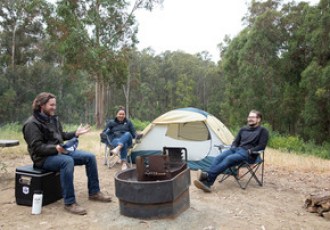BestReviews is reader-supported and may earn an affiliate commission. Details
We recommend these products based on an intensive research process that's designed to cut through the noise and find the top products in this space. Guided by experts, we spend hours looking into the factors that matter, to bring you these selections.

Whether you go on long kayaking adventures or you merely want a simple vessel for a bit of fun on the water, a sit-on-top kayak will serve you well.
But not all sit-on-top kayaks are the same. Some are designed for serious touring, and others are better suited for light recreational outings, and you don’t want to use the wrong one. Choosing the best sit-on-top kayak to fit your needs can be challenging, especially if you're a first-time buyer and not well versed in all things kayak.
We at BestReviews can help take the confusion out of shopping. We’ve done the research so you don't have to. Below you'll find our full shopping guide to sit-on-top kayaks, which will tell you all you need to know to find the right one for you. When you're ready to buy, scroll up to the product list to see our top five sit-on-top kayaks.

Sit-on-top kayaks (also known as SOTs) are less traditional than sit-inside kayaks, so you might be wondering if an SOT is right for you. Of course, the choice is yours, but here are some of the benefits of sit-on-top kayaks over sit-inside kayaks.
Wider and more stable
Easier to get in and out of for hiking or exploring
Easier to get into from the water for swimming, snorkeling, or scuba diving
Safer for newbies
More appealing to nervous kayakers
Don’t need bailing (scupper holes for draining any water in the hull)




















Designed for riding the ocean surf, these SOTs are short and wide for stability and have a lot of curve the the hull, or rocker. Though these kayaks are great at what they're designed for, they're slow on flat water.
Made for general use (but nothing too ambitious), recreational SOTs tend to be good all-rounders, but they don't necessarily excel at any one thing. These have some storage, but not as much as touring models, and they tend to be more suited to flat water rather than surf.
Touring SOTs are designed for longer trips. They have enough storage space for supplies to last a day or two. They tend to be fairly long and track well (move straight through the water).
SOTs made for scuba divers are stable enough to stand up to waves and slightly choppy water. These don't need a vast amount of storage space but should have a tank well big enough to carry your diving tank.

Make sure to choose a sit-on-top kayak of an appropriate length for your needs and abilities.
Longer kayaks are faster and have more room for storage, but these can be tricky to steer through obstacles.
Narrow: If you're looking for the fastest sit-on-top kayak out there, you'll want a narrow one. While this increases your speed, it will make your kayak less stable and easier to capsize. The narrowest SOTs aren't good for children, complete beginners, or nervous kayakers.
The vast majority of SOTs are made from two types of hard, molded polyethylene plastic.
Single-layer or linear polyethylene is the standard variety found on basic SOTs. It's tough and offers good performance overall, but it’s heavier and doesn't stand up to UV light as well as high-density polyethylene.
Some sit-on-top kayaks come with seats and others don't.
No seats: SOTs that don't have seats usually have a dipped or indented area for you to sit in. The manufacturer may sell seats as an optional extra.

You can expect to pay between $200 and $1,500 for a sit-on-top kayak.
These sit-on-top kayaks cost roughly between $200 and $400. Don't expect to get any bells and whistles at this price point, just a simple single-person vessel.
These sit-on-top kayaks cost between $400 and $700. In this price range, you'll find kayaks of various lengths and widths, suitable for many purposes, as well as some basic tandem kayak options.
These sit-on-top kayaks cost between $700 and $1,500. You can find some excellent one- and two-person kayaks for this price, with lots of extra features, such as comfortable seats, paddles, and ample storage.

A. A kayak's rocker refers to the curve of the hull from front to back. A sit-on-top kayak with a lot of rocker has a banana-shaped hull, while a model with very little rocker has a straighter hull. Kayaks with a lot of rocker are highly maneuverable and ideal for navigating narrow waterways with obstacles or whitewater use but not so good at going straight. Kayaks with little rocker track extremely well through the water but don't maneuver easily. For general use, choose a kayak with medium rocker.
A. Yes, all SOTs have a maximum weight capacity. It's often close to 250 pounds, but it can be slightly more or less, so always check before using. Bear in mind that this weight capacity includes you, any other passengers, and any gear you have on board.
A. Unless you're lucky enough to live right by the water, you'll probably have to transport your sit-on-top kayak from place to place by car. The good news is that you don't need a large vehicle to transport your kayak. Even a regular sedan will do the job, but you will need an appropriate roof rack.
Get emails you’ll love.
Learn about the products you’re wondering if you should buy and get advice on using your latest purchases.
